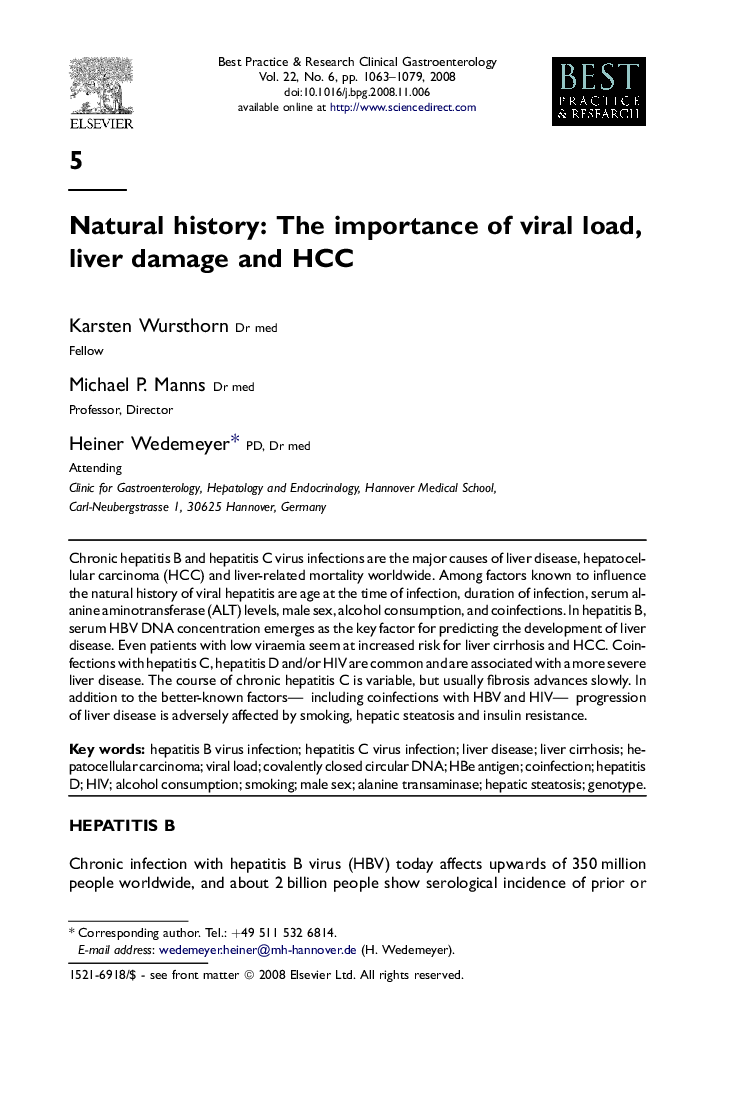| Article ID | Journal | Published Year | Pages | File Type |
|---|---|---|---|---|
| 3254631 | Best Practice & Research Clinical Gastroenterology | 2008 | 17 Pages |
Chronic hepatitis B and hepatitis C virus infections are the major causes of liver disease, hepatocellular carcinoma (HCC) and liver-related mortality worldwide. Among factors known to influence the natural history of viral hepatitis are age at the time of infection, duration of infection, serum alanine aminotransferase (ALT) levels, male sex, alcohol consumption, and coinfections. In hepatitis B, serum HBV DNA concentration emerges as the key factor for predicting the development of liver disease. Even patients with low viraemia seem at increased risk for liver cirrhosis and HCC. Coinfections with hepatitis C, hepatitis D and/or HIV are common and are associated with a more severe liver disease. The course of chronic hepatitis C is variable, but usually fibrosis advances slowly. In addition to the better-known factors— including coinfections with HBV and HIV— progression of liver disease is adversely affected by smoking, hepatic steatosis and insulin resistance.
